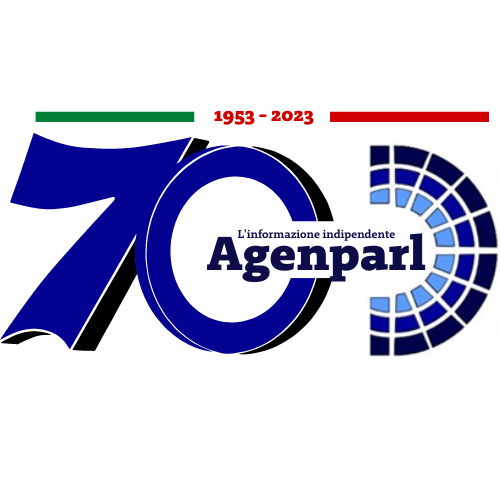 (AGENPARL) - Roma, 11 Luglio 2025
(AGENPARL) - Roma, 11 Luglio 2025(AGENPARL) – Fri 11 July 2025 A weekly compendium of media reports on science and technology achievements
at Lawrence Livermore National Laboratory. Though the Laboratory reviews
items for overall accuracy, the reporting organizations are responsible for
the content in the links below.
LLNL Report, July 11, 2025
A small section of Rubin Observatory’s view of the Virgo Cluster. (Image:
NSF–DOE Vera C. Rubin Observatory)
Rubin observatory boots up
https://www.independentnews.com/news/livermore_news/powerful-telescope-with-llnl-roots-begins-work/article_8e1d28f0-7c66-4dcb-89b7-a5c8fe597203.html
Using an extraordinary digital camera designed at Lawrence Livermore National
Laboratory (LLNL), the Vera Rubin Observatory began creating astronomical
images this week, with the first released to the public during a June 23 news
conference.
The Rubin Observatory is situated at nearly 8,800 feet in the Chilean Andes.
Its early name was Large Synoptic Survey Telescope (LSST), but it was renamed
for a pioneering U.S. woman astronomer.
The heart of its operation is the camera, which is the size of a small car
but twice as heavy, and is thought to be the world’s most powerful digital
camera at 3,200 megapixels.
Early camera design began at LLNL in 2001. Assembly took nearly a decade in
various parts of the U.S., including at LLNL, and in France.
The camera is expected to capture so much astronomical detail of the southern
sky every night that the system will generate a constantly evolving,
time-lapse movie of the cosmos..
Read More
https://www.independentnews.com/news/livermore_news/powerful-telescope-with-llnl-roots-begins-work/article_8e1d28f0-7c66-4dcb-89b7-a5c8fe597203.html
The first-ever aiEDGE for Innovation Day on March 26, hosted with OpenAI and
Anthropic, gave more than 3,200 LLNL employees exclusive access to the latest
AI models. (Image: Blaise Douros)
Claude coming soon
Anthropic makes generative AI widely available at major national lab
Anthropic is making the enterprise version of its chatbot Claude available to
the entire staff of the Lawrence Livermore National Lab, the artificial
intelligence company announced Wednesday.
The expansion comes as generative AI companies look to deepen their
relationship with the federal government’s national lab system — and amid
growing interest in agencies’ use of the technology.
Anthropic said the expansion comes after a pilot, as well as an event in
March that allowed thousands of scientists based at the California lab to
learn about the technology. The company said the program, which involves its
Claude for Enterprise product, constitutes one of the most significant lab
deployments of AI at the Energy Department.
As many as ten thousand national lab employees will now be able to use
generative AI for their work.
Lawrence Livermore will eventually have access to a forthcoming FedRAMP High
service, once it’s approved and accredited, meaning lab scientists will be
able to use Claude on unclassified data that requires that level of
accreditation.
Read More
Anthropic makes generative AI widely available at major national lab
The development of BBO-10203 combines the power of high-performance computing
with artificial intelligence and biomedical innovation. (Image: Amanda
Levasseur & Garry McLeod)
Cancer treatment — without side effects
https://scitechdaily.com/new-cancer-drug-blocks-tumors-without-debilitating-side-effects/
A new cancer drug candidate, developed through a collaboration between
Lawrence Livermore National Laboratory (LLNL), BridgeBio Oncology
Therapeutics (BBOT) and the Frederick National Laboratory for Cancer Research
(FNLCR), has shown the ability to inhibit tumor growth without causing a
major side effect often seen in similar therapies.
This compound, named BBO-10203, has demonstrated early success in clinical
trials by interrupting a crucial interaction between two cancer-promoting
proteins, RAS and PI3Kα. Unlike previous drugs targeting this pathway,
BBO-10203 does not induce hyperglycemia (elevated blood sugar levels), a
complication that has previously limited treatment options. The research,
published in Science, represents a significant advance for patients facing
aggressive cancers that have been difficult to treat.
“This is a precise, targeted strike on a long-standing cancer
vulnerability,” said LLNL Biochemical and Biophysical Systems Group Leader
Felice Lightstone, co-author of the study. “What’s especially exciting is
that this was achieved using a computational pipeline, reducing what
traditionally takes many years.”
Read More
https://scitechdaily.com/new-cancer-drug-blocks-tumors-without-debilitating-side-effects/
A “one pot,” light-based 3D printing process developed by LLNL
researchers is addressing a longstanding challenge in additive manufacturing.
(Image: Isabel Arias Ponce)
Damage-free design freedom
Dual-wavelength resin for embedded 3D printing with degradable supports
Researchers from Lawrence Livermore National Laboratory and the University of
California, Santa Barbara, have developed a dual-wavelength resin system for
digital light processing (DLP) 3D printing. Published in ACS Central Science,
the study demonstrates a method for simultaneously printing permanent
structures and degradable supports using a one-pot resin formulation. The
technique eliminates the need for resin swaps or manual support removal and
is enabled by a custom-built dual-wavelength DLP printer.
Unsupported features such as overhangs, bridges and free-floating elements
typically require support structures, which are often printed from the same
material and removed manually. This process can damage parts and limit design
freedom.
To address these challenges, the researchers developed a one-pot resin system
that responds to two different wavelengths of light: UV (365 nm) and visible
(405 nm). The UV-curable epoxy forms the final permanent structure, while the
visible-light-cured (meth)acrylate creates sacrificial supports. After
printing and thermal post-processing, the supports are removed via
degradation in a basic aqueous solution, leaving the primary structure
intact.
Read More
Dual-wavelength resin for embedded 3D printing with degradable supports
RECONNECT, or the Real-time inducEd seismiCity fOrecasts learNiNg sEismic
CaTalogs, is designed to revolutionize seismic monitoring and forecasting.
Detecting and forecasting seismicity
https://www.firstalert7.com/2025/07/01/odessa-college-partners-with-national-laboratory-new-18-million-energy-funded-initiative/
A new initiative designed to revolutionize seismic monitoring and forecasting
using real time, advanced machine learning technologies is coming to the West
Texas/New Mexico area.
The U.S. Department of Energy (DOE) Technology Commercialization Fund awarded
$1.8 million in funding to Lawrence Livermore National Laboratory (LLNL).
The project, “Advancing Real-Time Forecasts of Induced Seismicity with
Machine Learning-Based Event Detection and Location,” is expected to
deliver innovative solutions for managing induced seismicity.
These advancements will support critical industries, including carbon
storage, oil and gas production and geothermal energy.
Partners include Oak Ridge National Laboratory, Instrumental Software
Technologies, Inc. (ISTI), the Livermore Lab Foundation and several local
community colleges — including Southeast New Mexico College, Midland
College and Odessa College.
“Our goal is to identify and enhance operational safety, and bolster public
confidence in energy technologies,” said Kayla Kroll, a LLNL seismologist
and the project’s principal investigator. “It’s imperative to
understand how seismic activity is detected, classified and forecasted to
help ensure operators can proactively manage risks.”
Read More
https://www.firstalert7.com/2025/07/01/odessa-college-partners-with-national-laboratory-new-18-million-energy-funded-initiative/
——————————————————————————
Founded in 1952, Lawrence Livermore National Laboratory https://www.llnl.gov
provides solutions to our nation’s most important national security
challenges through innovative science, engineering and technology. Lawrence
Livermore National Laboratory is managed by Lawrence Livermore National
Security, LLC for the U.S. Department of Energy’s National Nuclear Security
Administration.
Read previous Lab Report articles online https://www.llnl.gov/news/lab-report
Unsubscribe from this newsletter
